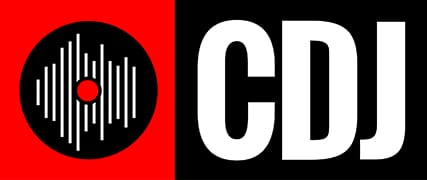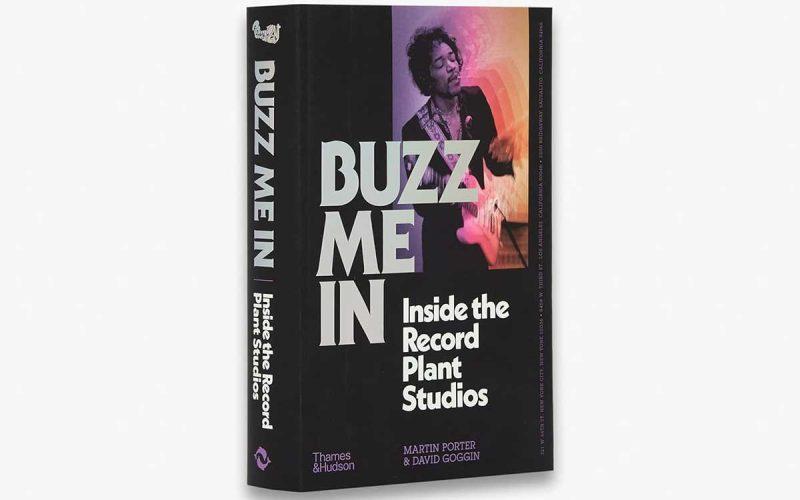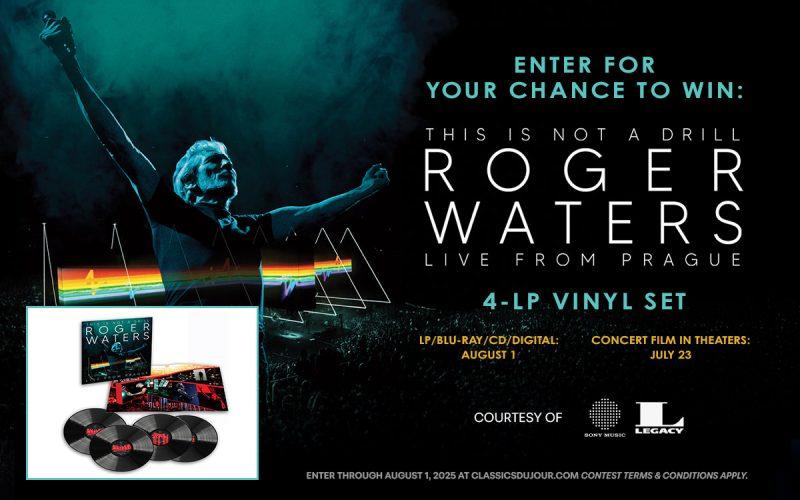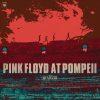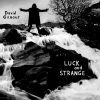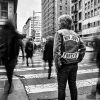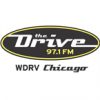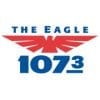
If there’s one artist who sums up American rock and roll, there’s a good argument to be made that this artist is Bruce Springsteen. Over the last five decades and change, The Boss has released 21 studio albums and several compilations; written an autobiography and performed a one-man show on Broadway; won 20 Grammy awards; been inducted into the Rock & Roll Hall of Fame and the Songwriters’ Hall of Fame; cohosted a podcast with Barack Obama in 2021; and given more (and longer) live performances than arguably anyone in rock and roll. Perhaps most importantly, his music has provided the soundtrack to millions of American lives.
Springsteen was born into a blue collar family in Freehold, New Jersey in 1949. He was bitten by the music bug early. Indeed, if you read his autobiography, Born To Run (from 2016), you find that Springsteen pursued music almost to the exclusion of everything else: school, sports, drugs. Nothing even came close to the appeal of music (except maybe girls!).
After cutting his teeth with various bar bands in New Jersey and beyond, Springsteen landed a deal with Columbia Records in the early ‘70s. His first two albums — Greetings from Asbury Park and The Wild, The Innocent and the E Street Shuffle — bookended the year 1973. These discs provided Springsteen with a cult following, as well as critical acclaim — but they failed to provide him with a hit. Springsteen knew that his third album, Born To Run, would probably make or break him; it made him.
When Born To Run was released in the fall of 1975, Springsteen wound up gracing the covers of both Time and Newsweek — unheard of for a musician, particularly one who wasn’t well known! But the title track of Born To Run became his first Top 40 hit. And other tracks — “Thunder Road” and “Tenth Avenue Freeze-out” in particular — got lots of play on AOR radio. Springsteen’s next two albums — Darkness on the Edge of Town from 1978 and The River from two years later — made him a ubiquitous presence on radio. In the meantime, he and The Street Band had developed a reputation for delivering some of the longest and most joyous rock and roll concerts in America. It was not unusual for their shows to last three or four hours.
[As a side note, the contributions of The E Street Band can not go unmentioned. During Springsteen’s “classic” period, the lineup included guitarists Steve Van Zandt and Nils Lofgren; keyboardists Danny Federici and Roy Bittan; sax player Clarence Clemons; bassist Garry Tallent; drummer Max Weinberg; and background singer Patti Scialfa. The band was so popular in its own right that several members had nicknames. Clarence Clemons was “The Big Man,” for example, while Roy Bittan was “The Professor.” Van Zandt’s aliases could fill a whole other article!]
Springsteen’s next studio album, Nebraska, arrived in late 1982 and surprised a lot of people. Recorded without The Street Band and with rudimentary equipment, it received raves from critics but was almost nihilistic in its mood and produced no hits. However, his next offering, Born in the USA, was the exact opposite: 12 songs made for arenas, played with The E Street Band. As such, it became one of the biggest selling albums of the decade and produced seven singles — all of which landed in the Top 10! At the time, only Michael Jackson had matched that feat. Springsteen closed out the ‘80s with Tunnel of Love, which despite being largely inspired by his impending divorce, topped the charts and produced several hits.
The ‘90s were a strange time for Springsteen as he would be the first to admit. Musically, it was his least prolific decade. In 1992, he released two albums simultaneously — Human Touch and Lucky Town. Maybe it was the fact that The E Street Band was gone, maybe it was just that there was too much material to absorb. But these two albums — at least by Springsteen standards — were critical and commercial disappointments. His only other studio effort from the ’90s was The Ghost of Tom Joad, which appeared in the middle of the decade and harkened back to Nebraska in its sound. Having said that, the ’90s were largely a positive time for Springsteen personally. His second marriage — to his old friend and bandmate Patti Scialfa — was a happy one. More than 30 years later, they’re still going strong. As anyone who has read Springsteen’s autobiography or heard him talk about Scialfa in interviews knows, his love for her is inspiring.
Since roughly the turn of the millennium, Springsteen has been musically prolific again. He reunited with The E Street Band and, in 2002, released The Rising, a well received disc that was largely inspired by the September 11th attacks. In the 20 years since then, he has unveiled no fewer than nine studio albums! There have been rock albums, folks albums, covers albums…. Even an album of AM-friendly pop of the sort Glen Campbell and Jimmy Webb might have put out (Western Stars).
This week, Springsteen turns a milestone 75. For the occasion, Classics Du Jour has made a list of 25 essential Springsteen songs (or Spring-songs, if you will). Included are new songs and old, rockers and ballads, big hits and deep cuts. The only stipulations are that we’ve included no more than two songs from any one album and no covers. Happy Birthday, Bruce!
25 One Minute You’re Here — 2020
The opening track from Springsteen’s last album of original material, Letter to You, “One Minute You’re Here” sets the tone for the rest of the record. If it’s less rock and roll than most of the album, it still paints a picture of transience and loss.
24 Ghosts — 2020
Also from Letter to You. “Ghosts” is also a song about loss but it’s a life-affirming rocker. “Count in the band, then kick into overdrive” sings Springsteen. “By the end of the set, we leave no one alive.”
23 The Wayfarer — 2019
Like most of the songs on Springsteen’s Western Stars outing, “The Wayfarer” is an orchestral pop song whose protagonist is a drifter.
22 Radio Nowhere — 2007
A claustrophobic rocker, “Radio Nowhere” was the opening track from Springsteen’s 2007 album, Magic.
21 Devils & Dust — 2005
Because it was released between The Rising — his first album with the E Street Band in many years — and We Shall Overcome: The Seger Sessions — a critically acclaimed collection of folk covers — Devils & Dust is often overlooked. But it’s a worthy part of Springsteen’s catalog, as the folky title track demonstrates.
20 Lonesome Day — 2002
Springsteen returned from a seven-year absence in 2002 with the release of The Rising, an album largely inspired by the September 11th attacks. “Lonesome Day” was the opening track, a song that was at once majestic and sad.
The Rising became Springsteen’s first disc to top the Billboard charts since Tunnel of Love, 15 years earlier.
19 The Fuse — 2002
A deep cut from The Rising, “The Fuse” is a bluesy song about two people trying to steal a moment of pleasure before it’s no longer possible. It’s a bit like Springsteen’s version of the old CCR song “Bad Moon Rising.”
18 Murder Incorporated — 1995
One of four new songs that appeared on Springsteen’s 1995 Greatest Hits collection, “Murder Incorporated” was actually written more than a decade earlier. It’s a great rocker, full of urban paranoia.
17 Streets of Philadelphia — 1994
The ballad “Streets of Philadelphia” was written for the 1993 film Philadelphia at the behest of its director, Jonathan Demme. Not only did the song reach number-nine here in the States, it topped the charts in Ireland, France and Germany. “Streets of Philadelphia” also won four Grammy Awards including Song of the Year.
Also impressive is the fact that, aside from Tommy Sims’ background vocals, Springsteen wrote the song, sang it and played all the instruments on it.
16 Lucky Town — 1992
“Lucky Town” was the title track of one of the two albums Springsteen released simultaneously in 1992. It’s an upbeat tune about a guy who’s looking forward to a night on the town after a long losing streak.
15 57 Channels — 1992
“57 Channels (and Nothin’ On)” was a single from Springsteen’s other 1992 album, Human Touch. At two minutes and change, it’s a concise rocker about a guy who gets cable TV to impress his materialistic wife, loses her, buys a gun, blows the TV to pieces and winds up in court.
14 Brilliant Disguise — 1987
“Brilliant Disguise” was the lead single from Springsteen’s Tunnel of Love disc, which was more intimate musically and lyrically than Born in the USA. It contains one of his best closing couplets: “Tonight our bed is cold/I’m lost in the darkness of our love/God have mercy on the man/Who doubts what he’s sure of.” This is a quietly devastating portrait of a marriage that’s on its last legs.
Backstage Access:
Iconic Artists Are Selling Their Catalogs, and It’s a Slippery Slope
13 Glory Days — 1984
“Glory Days” was the second most popular of the seven singles from Springsteen’s 1984 blockbuster Born in the USA (behind “Dancing in the Dark”). Its nostalgic lyrics — combined with Roy Bittan’s catchy synthesizer riff — resonated with the public in a huge way.
12 Dancing in the Dark — 1984
“Dancing in the Dark” was the first single from Born in the USA. It was a bit different than most of the album — perhaps more personal and more urban in focus. That said, it was a great song that climbed all the way to number two on the Billboard chart. The video — in which Springsteen pulls a then unknown Courtney Cox out of the audience to dance with him — certainly didn’t hurt.
11 Pink Cadillac — 1984
The B-side of “Dancing in the Dark,” “Pink Cadillac” was a good song in its own right and got quite a bit of airplay at the time. It’s a rockabilly tune about cars and sex — not necessarily in that order.
10 State Trooper — 1982
Springsteen shocked a lot of people when he released Nebraska in the fall of 1982. Sandwiched between two blatantly commercial rock albums — The River and Born in the USA — itwas low-fi before lo-fi even existed. The 10 songs were mainly dark portraits of criminals or people living in the outskirts of society.
“State Trooper” was one of Nebraska’s highlights — three minutes and change of existential, late night loneliness.
9 Hungry Heart — 1980
“Hungry Heart” was the first single from Springsteen’s double album The River,a midtempo ode to the comforts of home. While not necessarily one of his best songs, it was one of his biggest. “Hungry Heart” climbed to number five on the charts, his highest showing at the time.
8 Out in the Street — 1980
Also from The River. “Out in the Street” was never released as a single but it was a jubilant rocker that received lots of play on AOR stations.
7 Darkness on the Edge of Town — 1978
The title track of Springsteen’s fourth album, “Darkness on the Edge of Town” was its final song. A foreboding ballad about a guy who has lost his money and his wife, it benefits from Springsteen’s powerful vocals and nice organ work by Danny Federici on the outro.
6 Prove It All Night — 1978
Also from Darkness on the Edge of Town. “Prove It All Night,” a passionate rocker, became Springsteen’s second Top 40 hit.
5 Thunder Road — 1975
A great opener to what many people believe is Springsteen’s best album, Born To Run. “Thunder Road” finds The Boss attempting to get a hesitant girl named Mary to run away with him. The song is loaded with classic lines, from “You ain’t a beauty but hey, you’re alright” to “It’s a town full of losers and I’m pulling out of here to win!”
4 Born to Run — 1975
The title track of Born To Run was Springsteen’s first Top 40 hit. The song and the album took him from being a cult favorite to being a star. Springsteen once described “Born To Run” as “my shot at the title.”
Born To Run (the album) found Springsteen working with a revised E Street Band. Drummer Vini Lopez was fired and keyboardist David Sancious left for a prolific career in jazz. They were replaced by Max Weinberg and Roy Bittan, respectively. Interestingly, however, the drummer on the song “Born To Run” is one Ernest “Boom” Carter. It was the only Springsteen song Carter played on but what a credit!
A Deep Dive:
Bruce Springsteen’s “Born to Run”
3 New York City Serenade — 1973
“New York City Serenade” was the closing track from Springsteen’s sophomore set, The Wild, The Innocent and The E Street Shuffle. It’s not one of his best known songs but it is without question one of his most ambitious. Running 10 minutes in length, it takes a stream-of-consciousness look at life in New York City — the good, the bad and the ugly. Lovers cross paths with junkies while Springsteen proclaims, “It’s midnight in Manhattan/This ain’t no time to be cute/It’s a mad dog’s promenade…”
Musically, “New York City Serenade” is closer to jazz than it is to rock. It’s highlighted by David Sancious’ piano, Clarence Clemons’ saxophone and Springsteen himself on vocals and guitar. A masterpiece.
2 Sandy (4th of July, Asbury Park) — 1973
Also from The Wild, The Innocent and The E Street Shuffle. “Sandy” is one of Springsteen’s earliest and prettiest love songs. It’s loaded with images from New Jersey, but you don’t have to be from the Garden State to appreciate it.
1 It’s Hard To Be A Saint in the City — 1972
“It’s Hard To Be A Saint in the City” was the last song on Springsteen’s first album, Greetings from Asbury Park. Its urban poetry foreshadowed the direction he would take with his next effort. A great way to end an auspicious debut.
Backstage Access:
Bruce Springsteen & the Business of the Unexpected
